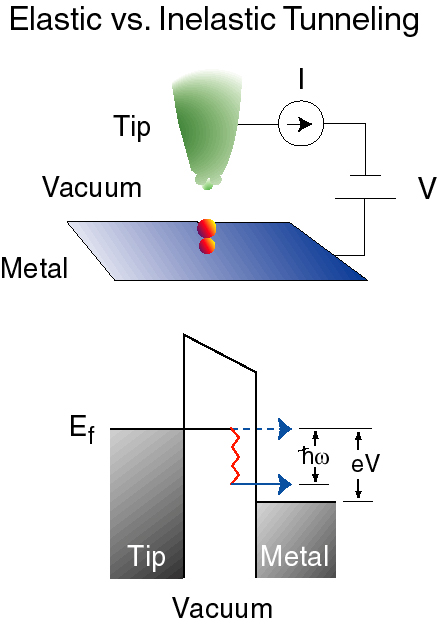Distinguished Professor
Physics and Astronomy & Chemistry
Department of Physics and Astronomy
4129 Frederick Reines Hall
University of California, Irvine, CA 92697-4575
|
| Donald Bren Professor Distinguished Professor Physics and Astronomy & Chemistry |
|||||
| Mailing Address: Department of Physics and Astronomy 4129 Frederick Reines Hall University of California, Irvine, CA 92697-4575 |
|||||
|
Professor Ho received B.S. and M.S. degrees in chemistry from the California Institute of Technology in 1975 and his Ph.D. in physics from the University of Pennsylvania in 1979. He spent a year at the AT&T Bell Laboratories as a Member of the Technical Staff and was on the faculty of Cornell University prior to joining the UCI faculty in 2000.
CV
Biography
Publications
Group Home
Page
Research Summary
Our research focuses on nanoscale chemical and physical phenomena with an emphasis on probing the basic properties of single atoms and molecules in their nono-environment on solid surfaces. The goal is to obtain detailed descriptions of single atoms and molecules which form the basis for understanding chemical and physical processes at surfaces and properties of nanostructured condensed matter and molecular materials.
The understanding of matter and its interactions with the surrounding at the atomic and molecular level is the central theme of our research program. The ability to control chemistry at the level of individual atoms and molecules underpins the way they interact and use the available energy to affect chemical transformation. The study of magnetism down to single atoms allows the understanding of how the electron spins play a role in chemical and physical processes.
The scanning tunneling microscope (STM) is a tool which not only allows us literally to see individual atoms and molecules but also to manipulate and spectroscopically characterize them. It is an all-purpose tool and is in effect a nanoreactor carrying out reactions with atoms and molecules in the nanocavity of the tunnel junction. Since the coupling of electrons to the nuclear motions provides the driving force for chemical transformation, the STM with its tunneling electrons can be tuned to induce atomic and molecular motions and to dissociate and form chemical bonds.
Tunneling electrons can be spin polarized. The STM can be used to probe magnetism and the effect of magnetic impurity on superconductivity and other solid state phenomena associated with the electron spin.
 We have demonstrated that chemical analysis with the STM is possible with
inelastic electron tunneling spectroscopy (IETS) and have reached the limit
of sensitivity of vibrational spectroscopy, that of a single bond. The ability
to measure spatially resolved vibrational intensity with sub-Angstrom resolution
in single molecules makes it possible to directly determine quantitatively
a number of fundamentally important physical and chemical processes.
We have demonstrated that chemical analysis with the STM is possible with
inelastic electron tunneling spectroscopy (IETS) and have reached the limit
of sensitivity of vibrational spectroscopy, that of a single bond. The ability
to measure spatially resolved vibrational intensity with sub-Angstrom resolution
in single molecules makes it possible to directly determine quantitatively
a number of fundamentally important physical and chemical processes.
The STM can be used effectively to probe solid state and molecular materials
at the spatial limit. Its versatility is reflected in a wide range of problems
which have been successfully investigated. These include intramolecular energy
transfer, energy dissipation resulting from bond breaking, chemical identification
and structural determination of reactants and products involved in the making
of individual chemical bonds and intermediates in multistep reactions, the
coupling of electrons to nuclear motions via individual molecular orbitals
(orbital-specific chemistry), electrical conductivity through single molecules
(molecular electronics), classical and quantum diffusion (tunneling) of single
hydrogen atoms, the spatially dependent interactions between two molecules,
and the fundamental motions of molecules (rotation, vibration, translation).
Single Molecule Chemistry by Tunneling Electrons. Physical Review Letters 1997, 78, 4410. B.C. Stipe, M.A. Rezaei, W. Ho, S. Gao, M. Persson, and B.I. Lundqvist.
Inducing and Viewing the Rotational Motion of a Single Molecule. Science 1998, 279, 1907. B.C. Stipe, M.A. Rezaei, and W. Ho.
Single-Molecule Vibrational Spectroscopy and Microscopy. Science 1998, 280, 1732. B.C. Stipe, M.A. Rezaei, and W. Ho.
Coupling of Vibrational Excitation to the Rotational Motion of a Single Adsorbed Molecule. Physical Review Letters 1998, 81, 1263. B.C. Stipe, M.A. Rezaei, and W. Ho.
Localization of Inelastic Tunneling and the Determination of Atomic-Scale Structure with Chemical Sensitivity. Physical Review Letters 1999, 82, 1724. B.C. Stipe, M.A. Rezaei, and W. Ho.
Single Bond Formation and Characterization with a Scanning Tunneling Microscope. Science 1999, 286, 1719. H.J. Lee and W. Ho.
Control and Characterization of a Multistep Unimolecular Reaction. Physical Review Letters 2000, 84, 1527. L.J. Lauhon and W. Ho.
Electronic Resonance and Symmetry in Single-Molecule Inelastic Electron Tunneling. Physical Review Letters 2000, 85, 1915. J.R. Hahn, H.J. Lee, and W. Ho.
Vibrationally-Mediated Negative Defferential Resistance in a Single Molecule. Physical Review Letters 2000, 85, 1918. J. Gaudioso, L.J. Lauhon, and W. Ho.
Direct Observation of the Quantum Tunneling of Single Hydrogen Atoms with a Scanning Tunneling Microscope. Physical Review Letters 2000, 85, 4566. L.J. Lauhon and W. Ho.